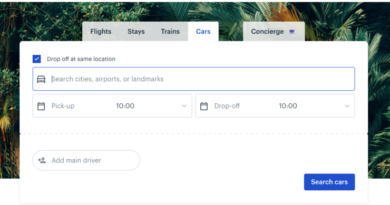How flexible work is changing holiday travel trends
Holiday travel has traditionally fallen on a certain set of days. The days immediately before and after major holidays are famously some of the most crowded in airports, as people turn on vacation and out-of-office notices and head home for the holidays.
But the new remote and hybrid work scenarios many workers find themselves in after the onset of the COVID-19 pandemic have led to a shift in how people travel for the holidays. With many professionals now able to work from anywhere, few need to take time off simply because they won’t be in the same geographic area as their offices.
This newfound flexibility has affected everything from the length of average holiday trips to the days travelers head to the airport. And many travel experts and industry leaders expect these shifts to continue as the new normal. TravelPerk compiled a list of five ways flexible work has impacted holiday travel trends from sources including Deloitte, the Washington Post, and the New York Times. Read on for a look at how flexible work is changing the face of holiday travel.
A rise in ‘workcations’
Flexible work is contributing to many Americans taking longer holiday trips. Workers can take more extended holiday trips, as they can work from other destinations instead of taking allotted vacation days. A Deloitte survey found that travelers add an average of six days to their travels due to remote work flexibility. This ties into a larger trend of travelers mixing work and leisure on longer trips due to the ability to work remotely—what some travel experts call “workcations” or “bleisure” trips. About 1 in 4 travelers reported their intent to work while on their longest trip of the holiday season.
Longer holiday trips
On the whole, remote work means travelers are taking longer trips. Remote workers simply tack on days to their leisure trips, particularly for the holidays, during which they will work during the day but relax with friends and family on weekends or evenings. This pattern is evident in recent travel data.
The most popular date to travel for Thanksgiving in 2022 was the Friday before Thanksgiving (Nov. 18) rather than the Wednesday the day before (Nov. 23), according to the travel search engine Skyscanner. There has been an average 26% increase in the length of travel, according to Skyscanner, and many workers are reporting increased satisfaction and relaxation due to their ability to spend more time on vacation.
Increased demand for midday flights
Flexible work has also changed the times of day when people travel. When work was primarily conducted in an office, workers needed to schedule their flights for later at night to get in a full day in the office before traveling. According to the New York Times, however, American Airlines has found that more travelers are booking flights in the middle of the day. Whereas travelers were once most interested in flights leaving before 8 a.m. or 4 p.m., interest is shifting to midday flights, as they can now work remotely from laptops, even in the air.
A change in peak travel days
In the past, airlines traditionally reported passengers booking travel more frequently on certain days of the week than others. This is particularly true around holidays. But flexible work has changed that, as travelers now have the flexibility to begin trips sooner and end trips later. Travelers have discovered several benefits from more flexible travel dates. Among these are the option to secure better-priced airfare and the flexibility to travel on days of the week that are traditionally less crowded, making for a less stressful travel experience.
Growth of airport coworking spaces
As people travel more during the working week, the need for more places to work at the airport has become evident. As such, a new amenity is coming to some airports: coworking spots. One major player in the airport coworking space is the company IWG, which has almost 50 workspaces in airports worldwide. Some spots, such as the coworking spot in Amsterdam’s airport, even have meeting rooms. The company has said it plans to add over 1,000 locations in 2023.
More business offerings catering to remote work may be on the horizon, especially as demand for work flexibility remains strong. In October 2022, LinkedIn reported that on its platform, 64% of job seekers applied to at least one remote job and remote listings still attract the majority of applications. As remote work continues to reshape the working world, workcations, bleisure trips, and extended holiday travel will continue to change how—and when—we travel, too.




